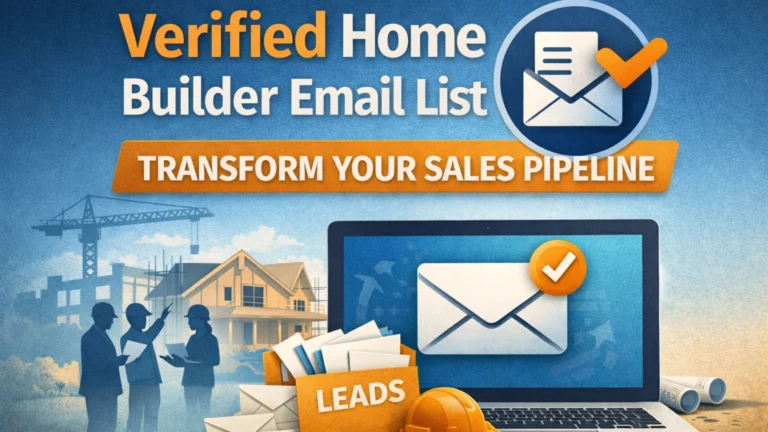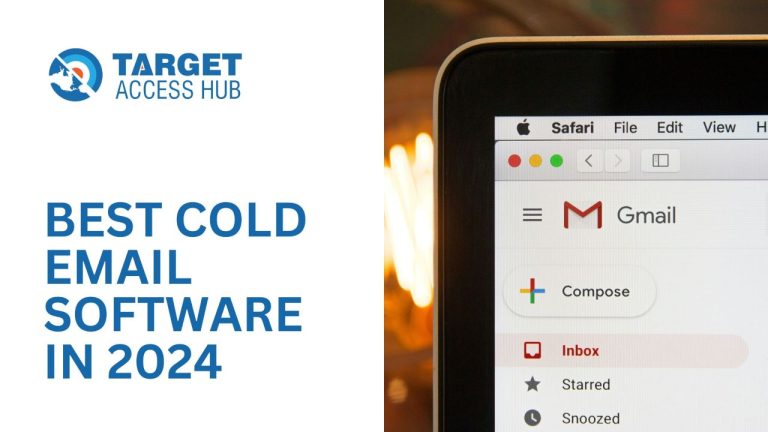How a “Dead” Email List Generated $2 Million in Revenue: The Hidden Gold Mine in Your Inbox
Every morning, hundreds of marketers around the world wake up to the same sobering reality: a significant portion of their email subscribers haven’t opened an email in months.
The conventional wisdom? Delete them. They’re dead weight, dragging down your metrics and costing you money. But what if everything you’ve been told about “inactive” subscribers is wrong?
A recent case study from a retailer proves that your “dead” email list might actually be sitting on a goldmine. This company took 340,000 supposedly worthless subscribers and transformed them into $2 million in revenue. The secret wasn’t luck or magic. On the contrary, it was simply an understanding that “inactive” doesn’t mean “uninterested.”
The Shocking Truth About Email List Engagement
Here’s a statistic that should make every marketer pause: 60% of your email list hasn’t opened an email in the past 90 days. Most marketing teams see this number and immediately think “cleanup time.” They’re quick to hit delete, believing these subscribers are hurting their deliverability and engagement rates.
This mindset isn’t just common—it’s costly. What marketers fail to realize is that email engagement metrics don’t tell the complete story. Behind every “inactive” subscriber is a real person with real purchasing power, and they might be more engaged than your analytics suggest.
Consider this: Apple’s Mail Privacy Protection, introduced in iOS 15, fundamentally changed how email opens are tracked. Suddenly, millions of legitimate subscribers appeared “inactive” not because they stopped reading emails, but because their email client stopped reporting opens. Add to this the growing trend of people using preview panes to scan emails without technically “opening” them, and you begin to see why traditional engagement metrics are increasingly unreliable.
The $2 Million Case Study: When “Dead” Subscribers Come Alive
Our featured retailer faced a challenge that’s becoming increasingly common in the email marketing world. With 800,000 subscribers on their list, nearly half hadn’t shown any engagement in six months. The marketing team was ready to perform what they called a “list cleanse”. This refers to deleting hundreds of thousands of contacts that are deemed worthless.
But before pulling the trigger, they decided to dig deeper into the data. What they discovered challenged everything they thought they knew about subscriber behavior.
The analysis revealed that 78% of these “dead” subscribers had actually made purchases before, though their buying patterns were seasonal rather than consistent.
Nearly half were still reading emails through preview panes, which don’t register as traditional opens. Perhaps most importantly, geographic data showed clear timing patterns based on location. Subscribers weren’t ignoring emails, they were receiving them at the wrong times.
Instead of the generic “We miss you!” reactivation campaign that most companies deploy, this retailer decided to send the right message at the right time based on each subscriber’s past behavior. The results were nothing short of remarkable: a 31% reactivation rate that generated $2.3 million in revenue from contacts that were previously considered worthless. Even more impressive, 43% of these reactivated subscribers made purchases within 60 days.
The Three-Step Methodology That Transforms Dead Lists
The success of this campaign wasn’t accidental. It followed a systematic approach that any business can implement.
Step 1: Segment Like a Pro
The biggest mistake marketers make is treating all inactive subscribers the same. In reality, there are distinct patterns and categories within your “dead” list that require different approaches.
Seasonal buyers represent a massive opportunity that most companies overlook. These subscribers might appear inactive for months, but they’re actually waiting for the right season to engage. Think holiday shoppers who only buy gifts in November and December, or parents who purchase school supplies exclusively in August. By identifying these patterns, you can time your reactivation campaigns to coincide with their natural buying cycles.
Life stage triggers offer another powerful segmentation opportunity. New parents, college students, and retirees all have distinct needs and shopping behaviors. A new parent might stop engaging with fashion emails but could be highly responsive to baby-related content. Understanding these life transitions allows you to adjust your messaging and timing accordingly.
Geographic patterns reveal timing insights that improve your success rates. Subscribers in different time zones receive emails at different times of day, affecting open rates. Weather patterns influence purchasing behavior. For example, swimwear sells better in sunny climates, while winter gear appeals to colder regions. Local events and holidays create specific opportunities for engagement that national campaigns often miss.
Product preferences provide the final piece of the segmentation puzzle. By analyzing what subscribers previously bought versus what they browsed, you can identify their true interests and tailor your reactivation campaigns accordingly.
Step 2: The “Surprise & Delight” Sequence
Generic reactivation emails fail because they focus on the company’s needs rather than the subscriber’s interests. The most successful approach uses a carefully crafted sequence that builds curiosity and provides genuine value. The sequence begins with a curiosity hook that makes subscribers wonder what they’ve been missing. Subject lines like “Something’s different about your account…” or “This wasn’t here last time you visited…” create intrigue without feeling pushy or desperate.
The second email provides exclusive value – early access to sales, insider tips, or free resources that aren’t available to the general public. This demonstrates that being a subscriber has tangible benefits and rewards their past loyalty. Social proof comes next, showing what other customers have discovered or achieved while the subscriber was away. This creates FOMO (fear of missing out) without being aggressive, positioning the subscriber as part of an exclusive community.
The fourth email presents an irresistible offer that’s personalized to their purchase history and browsing behavior. This isn’t a generic discount, rather it’s a targeted incentive that speaks directly to their demonstrated interests. The final email gives subscribers a clear choice: update their preferences to receive more relevant content or unsubscribe cleanly. This respects their autonomy while providing an opportunity to improve future targeting.
Step 3: Go Multi-Channel
Email-only reactivation campaigns have limited success because they ignore the reality of modern consumer behavior. People interact with brands across multiple touchpoints, and your reactivation strategy should reflect this reality.
Cross-referencing your “dead” email list with social media followers often reveals that subscribers are still engaged with your brand—just on different platforms. They might not be opening emails, but they’re liking posts, sharing content, or commenting on your social media accounts.
SMS subscribers represent another valuable crossover opportunity. Text messages have higher open rates than emails, making them an effective channel for reactivation campaigns. The key is to ensure your messaging is consistent across channels while adapting to each platform’s unique characteristics.
Website visitors who haven’t opened recent emails might still be browsing your site, researching products, or reading your blog. Retargeting these visitors with display ads or personalized web experiences can reignite their interest and drive them back to your email content.
Past customers deserve special attention in your reactivation efforts. They’ve already demonstrated trust in your brand by making purchases, making them prime candidates for re engagement. Loyalty programs, exclusive previews, and personalized recommendations based on their purchase history can be particularly effective.
Why This Strategy Works When Others Fail
The success of this approach stems from understanding a fundamental truth about human behavior: most “inactive” subscribers aren’t ignoring your brand. They’re waiting for something worth their attention. Timing beats frequency every time. Rather than increasing email volume, successful reactivation focuses on sending the right message at the right moment. This might mean waiting for a subscriber’s birthday, the anniversary of their last purchase, or the beginning of their typical buying season.
Relevance beats volume in every scenario. Personal, targeted messages consistently outperform generic broadcasts. When subscribers receive content that speaks directly to their interests, needs, and past behavior, they’re much more likely to engage. Patience beats pressure in building long-term relationships. Aggressive reactivation campaigns that bombard subscribers with daily emails often backfire, damaging sender reputation and driving unsubscribes.
The most successful approach gives subscribers time to respond naturally while maintaining consistent, valuable touchpoints.
The Bottom Line: Your “Dead” List Is Very Much Alive
The $2 million success story isn’t an anomaly—it’s proof that traditional email marketing metrics don’t tell the complete story. Your “inactive” subscribers represent untapped revenue potential that requires a more sophisticated approach than simple deletion.
By segmenting strategically, crafting compelling sequences, and taking a multi-channel approach, you can transform your “dead” email list into a significant revenue driver. The key is understanding that behind every inactive subscriber is a real person with real needs, waiting for the right message at the right time.
Before you delete those supposedly worthless contacts, consider this. Your biggest revenue opportunity might be hiding in plain sight, buried in a list you’ve already written off as dead.

![Ultimate Guide : Property Management Email Templates [2024]](https://targetaccesshub.com/wp-content/uploads/2024/02/maximizing-property-management-success-through-email-templates-768x432.webp)




